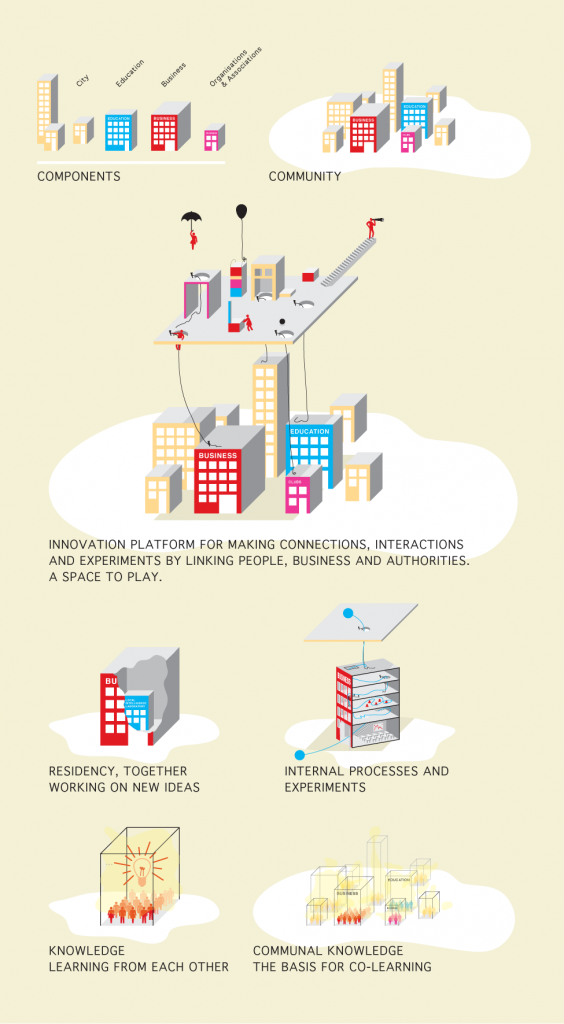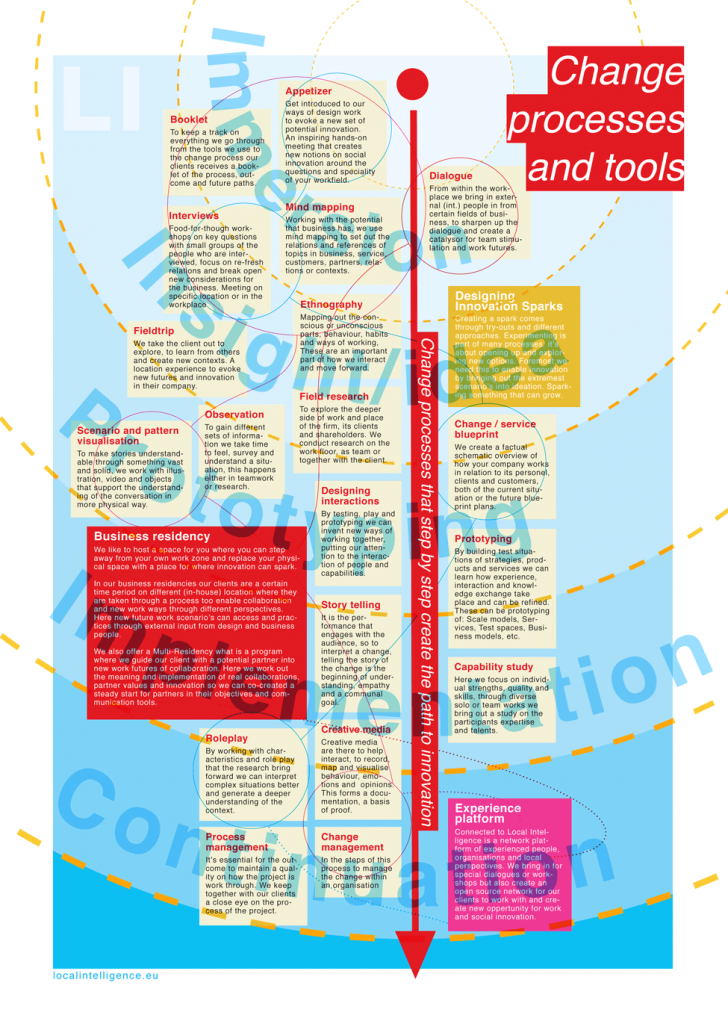INSIGHT INTO MY EXPERIENCE
A brief insight to what I’ve been up to for the last eight years. After graduating in London at RCA from the Product Design department and working on a variety of jobs in London, new opportunities led me to the Netherlands and Berlin with many other places bridged on the way like Seattle, Ljubljana and Moscow, Vienna, Madrid, Budapest and Brussels. In general I have been working on projects in the fields of architecture, urban design, policymaking, education, social innovation, user interface design, interactive design, product design and business innovation; in the roles of designer, teacher, organiser, illustrator, graphic designer, conceptual thinker, art director, builder, researcher and project leader, often wearing many heads at the same time.
I have developed communication strategies and workshops for architecture agencies, taught ceramics, re-designed a city square in Kampen, developed a game about political credibility for the province of Overijssel, created new ways for children to learn about cultural heritage and implementing this in the region of Breda (reaching over 25.000 children), created new digital tools for learning about bio informatics in the classroom for the NBIC. I was part of a team developing a innovative PHD program for the University in Frankfurt Oder. In collaboration with the state of Berlin I developed new ways to trigger innovation in business streets, together with the city library of Deventer I have created new perspectives on how they can approach their future role in the city and I have been teaching Design Research at the ArteZ (Arnhem Institute of art and design), … and much more. All these projects I have been running under my own organisations and initiatives.
I would like to point out two recent projects, Berlin’s Hollywood and teaching Desing Research at ArteZ. Both are experimental projects taking place in the real world. Berlin’s Hollywood is a prizewinning project for the Senat of Berlin in which, next to a lot of street research in the form of conversations and workshops, also a continuous conversation with the Bezirk took place to find out how to both make friends and push the boundaries of het accepted. The result a film project with a mobile park as a tool set piece with local presence that can be parked anywhere without needing a permit. At ArteZ I have been leading students for the last years in a process to start to discover what research means and how it is an important asset for a designer. Creating a problem and than working together to find possible ways of tackling is the approach, there is no wrong or right, as long as the process is carefully designed. Other important design aspects are the communication and involvement of others in the process. Creative research is not something that come easy, students loose track big time. The techniques that the class starts with are based around the body as a research instrument, a tool to sense and reflect. The question is how you yourself can be the starting point of your research, wherever this might lead…
In the Netherlands, I ran my own company and I have been part of a foundation called Mens-in-Beeld. In this foundation we developed new ways for school classes to learn about cultural heritage to take place in primary schools (age 4-12), redefining the role of the teacher, and introducing new ways of learning and understanding for the students.
In Berlin, As a part of the HomeBase Artistic Research Lab I have been leading the organisational transformation from a traditional Artist-in-Residence into a research institute around the topics home, identity, technology, human/behaviour and human-technology. Over a period of two and a half years I guided groups of 12-20 artists in their research. Also in Berlin, I ran a business for 3 years called LocalSmarts which was focused on triggering social innovation in society through combining the area’s of public space, education and design. Bringing together local authorities, neighbourhoods and organisations pushing the limits of the accepted and expected.
My vision and idealism started about 10 years ago. During my Bachelors graduation I started with the scenario of families from different backgrounds, socio-economic status, to reuse and repurpose the objects in their house that they were about to throw out into useful products. The process that I designed focused on value of creation, the families feeling apart of the process with as a purpose the continued use of the newly created object. Behind the scenes of the project there was a strong educational focus. The true purpose was to show people how they can look at they belongings in another way, in a more transformational form, objects and materials that can morph and blend into new functions. Seeing their surroundings with new eyes, being educated to think, to reflect, to design and to create.
I see the potential of situations, and objects to be part of the evolution of society, to steer and guide humanity in its exploration.



